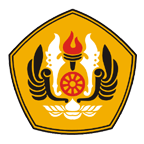Plasma Fractionation: Conditions and Challenges
Abstrak
Plasma is a blood component that has a role in treating various diseases, such as haemophilia and blood-clotting disorders. Plasma used for treatment is referred to as plasma-derived drug products (PDMPs), which are obtained through the plasma fractionation process. This study aims to explore the conditions of plasma fractionation in various countries and highlight some of the challenges faced by the plasma fractionation industry. The methods used include searching for articles published over the past decade from trusted sources, such as Google Scholar, PubMed, and ScienceDirect, using specific keywords. The results of literature studies related to plasma fractionation were obtained from 20 countries spanning several continents. The conditions and challenges faced in plasma fractionation in those countries differ. Some of the challenges faced are related to technology, regulation, plasma sources, human resources, and the economy. Currently, Indonesia is working with South Korea to build the first plasma fractionation facility. Therefore, the conditions and challenges faced by various countries can serve as a reference for Indonesia in preparing the factors that influence plasma fractionation development, in accordance with the World Health Organization (WHO) recommendations.
Kata Kunci
Teks Lengkap:
PDFReferensi
Mathew J, Sankar P VM. Physiology, Blood Plasma.. StatPearls Publishing. 2023. Available from: https://www.ncbi.nlm.nih.gov/books/NBK531504/
Mehdipourchari K, Enderami SE, Mansour RN, Hasanzadeh E, Amini Mahabadi J, Abazari M, et al. Applications of blood plasma derivatives for cutaneous wound healing: A mini-review of clinical studies. Regen Ther. 2024;27:251–8.
Bolcato M, Jommi C. Shortage of plasma-derived medicinal products: what is next? narrative literature review on its causes and counteracting policies in Italy. Front Pharmacol. 2024;15.
Mousavi Hosseini K, Ghasemzadeh M. Implementation of Plasma Fractionation in Biological Medicines Production. Iran J Biotechnol. 2016;14(4):213–20.
Farrugia A, Scaramuccia D. The dynamics of contract plasma fractionation. Biologicals. 2017;46:159–67.
Grazzini G, Ceccarelli A, Calteri D, Catalano L, Calizzani G, Cicchetti A. Sustainability of a public system for plasma collection, contract fractionation and plasma-derived medicinal product manufacturing. Blood Transfus. 2013;11(SUPPL. 4):24–8.
Burnouf T. Current status and new developments in the production of plasma derivatives. ISBT Sci Ser. 2016;11(S2):18–25.
Choi CW, Choi Y, Maryuningsih YS, Wibisono B, Kim JW, Ramondrana D, et al. Report for the Eighth Asian National Control Laboratory Network meeting in 2023: Self-sufficiency strategy of plasma-derived medicinal products and regulatory harmonisation. Biologicals. 2024;85:101754.
Domanović D, von Bonsdorff L, Tiberghien P, Strengers P, Hotchko M, O’Leary P, et al. Plasma collection and supply in Europe: Proceedings of an International Plasma and Fractionation Association and European Blood Alliance symposium. Vox Sang. 2023;118(9):798–806.
Omokawa S, Abe M. The plasma supply in Japan. Transfus Apher Sci. 2020;59(2):102749.
Triyono TT, Bidayah HF. Plasma collection in Indonesia - a challenge to implement fractionation. Bali Med J. 2023 Apr 17;12(2):1238–42.
Menteri Kesehatan Republik Indonesia. Peraturan Menteri Kesehatan Republik Indonesia Nomor 4 Tahun 2023 tentang Penyelenggaraan Fraksionasi Plasma. Jakarta: Kementerian Kesehatan RI; 2023
Bekele B, Masresha Z, Alemayehu M, Seyoum B, Wassie L, Abebe M. Intravenous Immunoglobulin G (IVIG) Need Assessment Survey Toward Local Manufacturing of IVIG Using a Mini-Pool Plasma Fractionation Technique. Heal Serv Insights. 2023;16.
Bansal N, Khajuria K, Kaur Cheema R, Sharma A, Singh Bajwa B. Implementation of Indian National plasma policy at blood bank of a tertiary care hospital: A step towards strengthening of blood transfusion services. Transfus Clin Biol. 2024;31(1):3–6.
Seong SK, Kim YH, Choi Y, Koh HJ, Kim SJ, Kim MJ, et al. Overview of regulatory frameworks on the national lot release of plasma-derived medicinal products in Korea. Biologicals. 2024:101768.
Wang Y, Wang Z, Liu B, Huang X, Li W, Li C. Plasma fractionation in China: progress and challenges. Ann Blood. 2018;3:15.
Watanaboonyongcharoen P, Apiwattanakul M, Santipong S, Jaipian J, Siriaksorn J, Rojnuckarin P. Safety and efficacy of the thai red cross society albumin replacement for therapeutic plasma exchange. J Med Assoc Thail. 2018;101(11):1563–7.
Omarjee JH, Germishuizen WA, Chetty R, Stubbings D. Plasma fractionation in South Africa: challenges and successes in meeting international standards. Ann Blood. 2018;3:6.
Sanaei MJ, Abolghasemi H. Plasma industry in Iran: Challenges and opportunities. Iran J Blood Cancer. 2023;15(2):97–112.
Weinstein M. Regulation of plasma for fractionation in the United States. Ann Blood. 2018;3:3.
Amorim L. Steps and challenges in the implementation of a plasma fractionation program: Brazil experience. Ann Blood. 2018;3:26.
DOI: https://doi.org/10.24198/ijpst.v12i3.63343
Refbacks
- Saat ini tidak ada refbacks.
| Switch to English Back to Top |
| View My Stats Penerbit Universitas Padjadjaran
Jurnal ini terindeks di :Creative Commons Attribution :
Based on a work at http://jurnal.unpad.ac.id/ijpst/ |
 Indonesian Journal of Pharmaceutical Science and Technology
Indonesian Journal of Pharmaceutical Science and Technology




